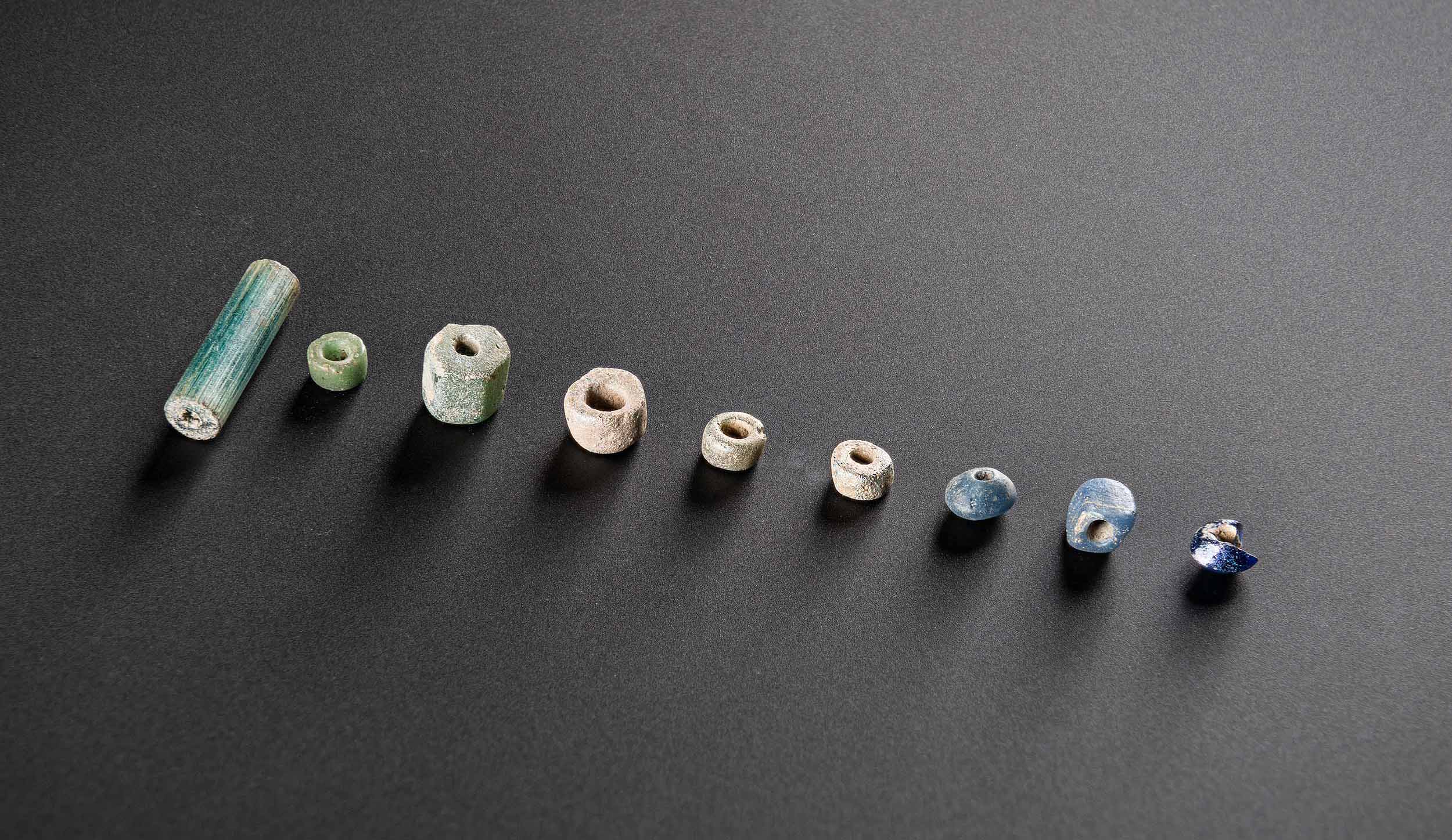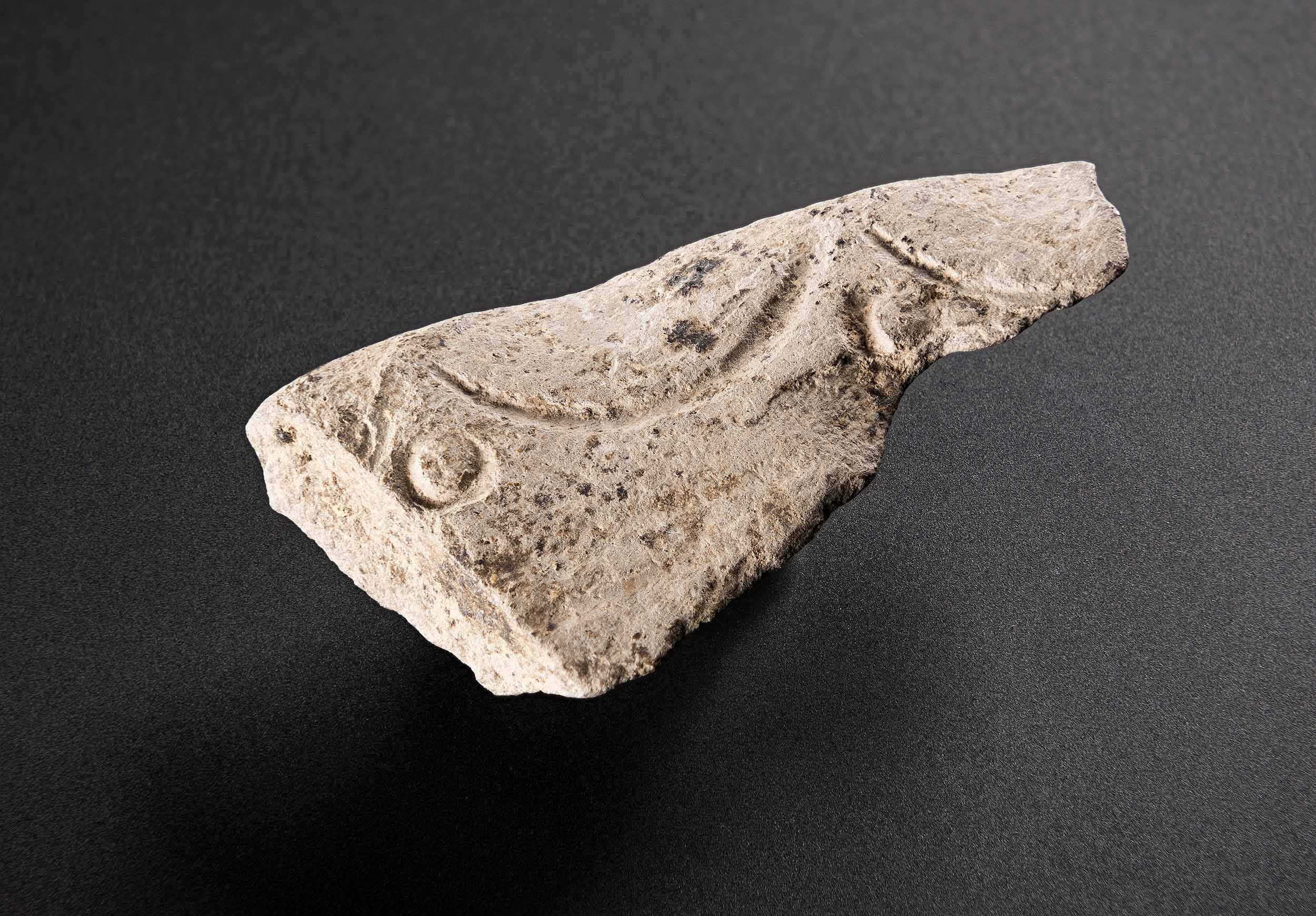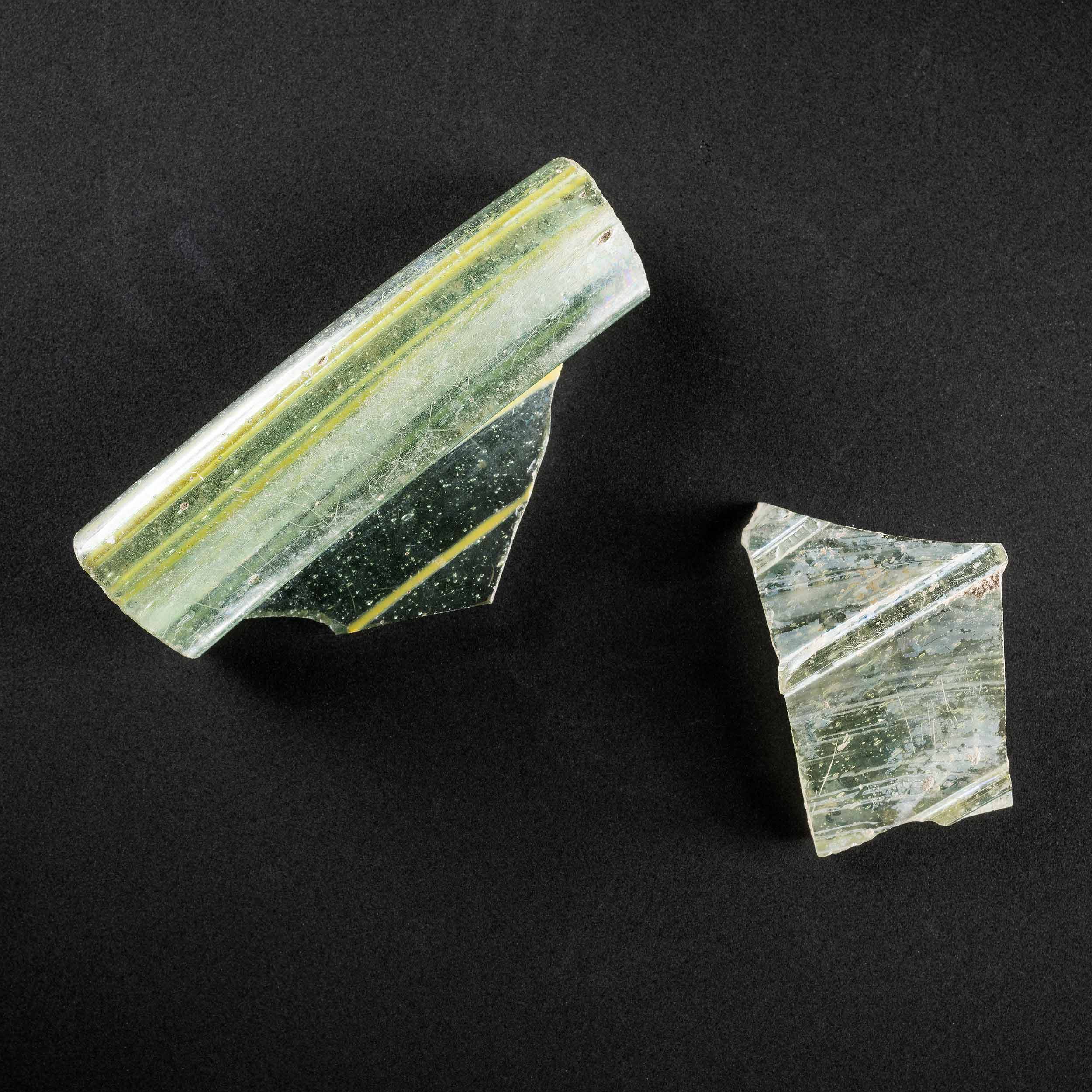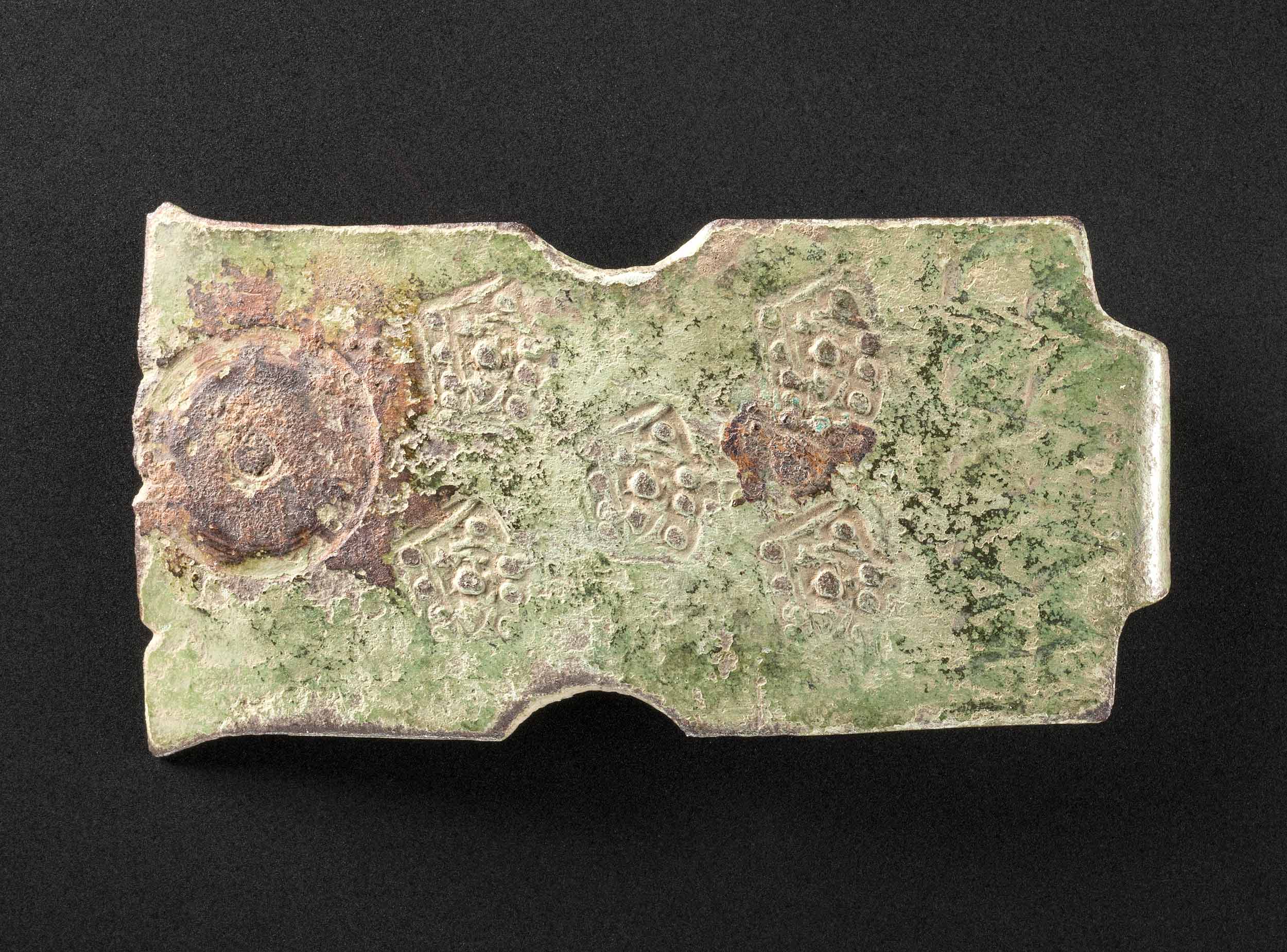The castle has been the subject of archaeological attention for over a century, with the earliest work taking place in 1852. English Heritage has a collection of around 3,500 objects excavated between 1906 and 1995.
Some of these, including a ring and silver spoon, are too valuable to display at the castle, but you can explore 3D models of them here. To view the 3D objects, select the play button on the image below, then use your cursor or touch screen to rotate the object and zoom in. For descriptions of each object, select the title in the top left corner of the image (opens in a new window).
View objects in 3D
Pevensey Castle Collection Highlights by English Heritage on Sketchfab. Models derived photogrammetrically by Jon Bedford of the Geospatial Imaging Team at Historic England on behalf of English Heritage
More collection highlights
Glass beads
Uncertain origin, glass, 4th to early 5th century
Small glass beads of this type are quite common in the late Roman period. They typically appear in green, blue and yellow, like the beads here, and were usually strung on long necklaces.
What is interesting about the beads from Pevensey is that most of them were found in the surface of a road which was not constructed until after the Roman withdrawal from Britain in AD 410. They show that Britons continued to use Roman dress and fashions in the post-Roman period.
Bowl rim
Greek, ceramic, 5th century
This tiny fragment of a decorated bowl rim is from a piece of Macedonian greyware, a type of ceramic only rarely found in England. What makes this piece even more special is that it was exported from Greece in the early 5th century, a time when imports to England were decreasing as the Roman Empire broke apart. As such it must have been an incredibly expensive luxury for its original owner.
Along with other rare ceramics, including part of a bowl imported from Africa, this fragment demonstrates the extent of Pevensey’s international connections at this date.
Glass vessel fragments
Continental, glass, 7th to 8th century
Though small, these two fragments of glass are vital for our understanding of Pevensey in the Anglo-Saxon period.
They are both from high quality imported vessels. The one on the right is from a cone-shaped beaker, in pale green glass with vertical trails of a similar colour. This beaker is of the ‘Kempston’ type, originating from the Germanic areas of Europe and named for a complete example found at Kempston in Bedfordshire, now in the British Museum. The other is from a Valsgärde bowl in sea-green glass with thin yellow stripes and the rim folded outwards. Valsgärde bowls came from northern Italy and are named for a complete example found in a boat grave at Valsgärde, Sweden, currently in the Nordic Museum, Seattle, Washington.
Such luxury items are rarely found in areas where there is relatively little evidence for Saxon settlement, as is the case at Pevensey. The fact that there were a number of them on a small site suggests that Pevensey may have been the seat of one of the rulers of the South Saxon kingdom.
Book clasp
British, copper alloy, 15th century
Medieval books were extremely valuable because of the skilled work required to make them. Consequently many were held shut with decorative clasps like this, which could help prevent the pages from warping as well as protecting them from light and dust. This clasp has been stamped with a number of small crowns, suggesting that it may have belonged to someone with royal connections.
Pevensey was used as a prison in the 15th century, holding such notable figures as Edward, Duke of York, in 1405, James I of Scotland in 1406 and Queen Joan of Navarre (Henry IV’s widow) in 1419. It is interesting to speculate whether the book may have belonged to one of them.
Related content
-
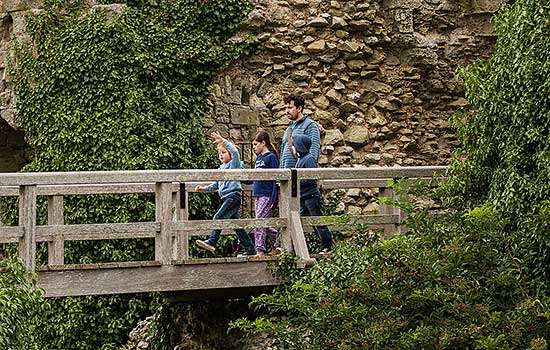
Visit Pevensey Castle
With a history stretching back over 16 centuries, Pevensey chronicles more clearly than any other fortress the story of Britain’s south coast defences.
-

History of Pevensey Castle
Read a full history of this site, first fortified by the Romans, and most famously the place where William the Conqueror landed on 28 September 1066 before the Battle of Hastings.
-

1066 and the Norman Conquest
Find out more about the Battle of Hastings and the events of 1066, and discover where to find some of the most spectacular castles and abbeys the Normans built across England.

